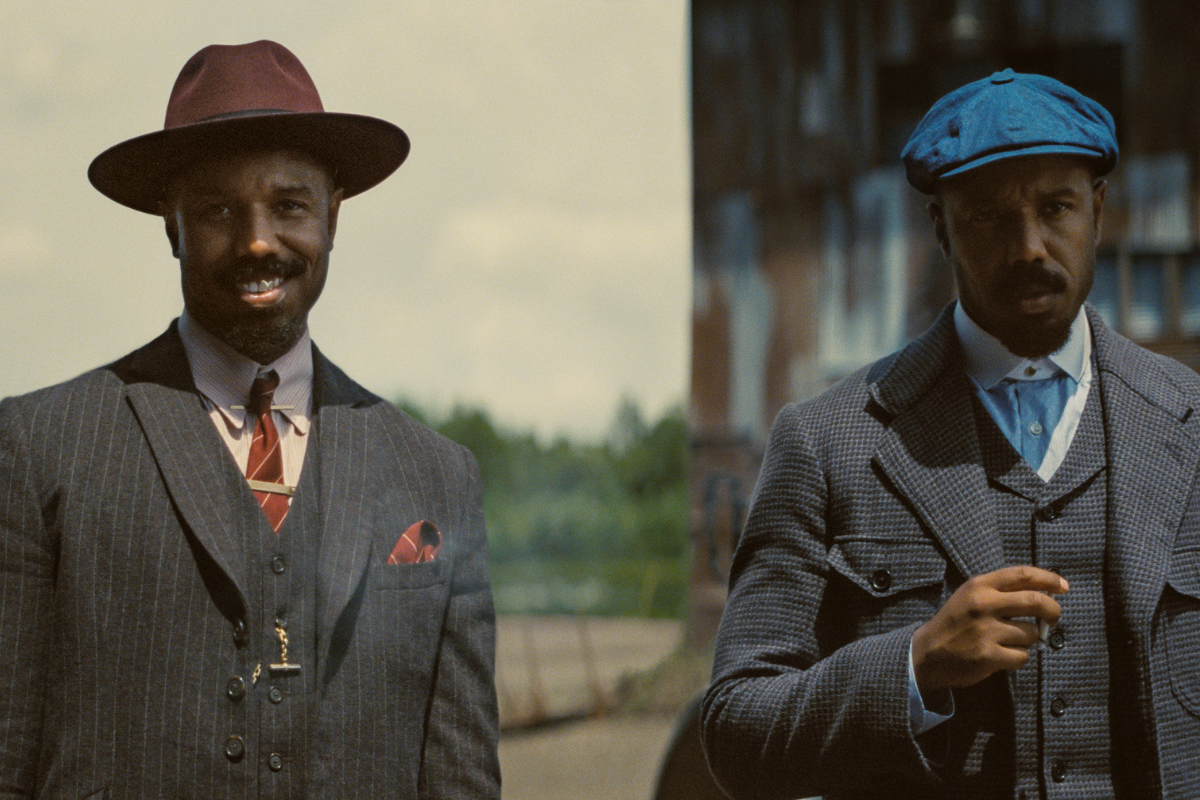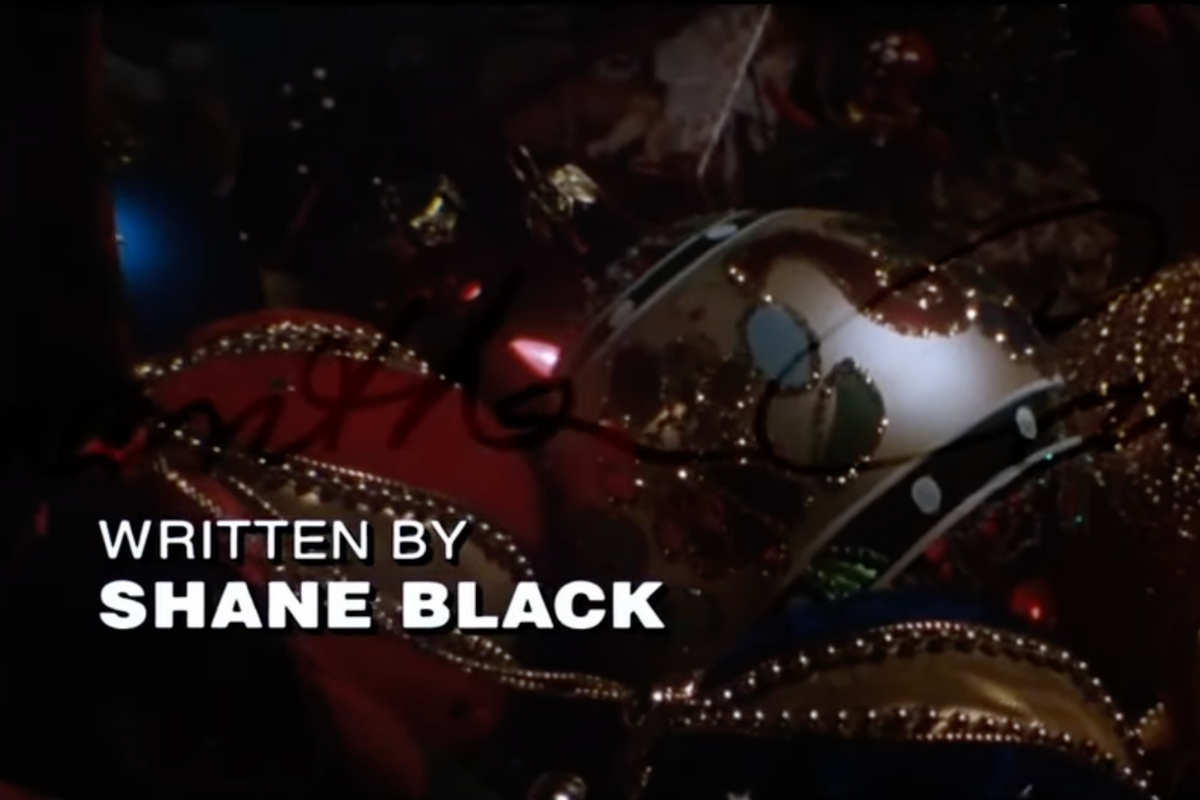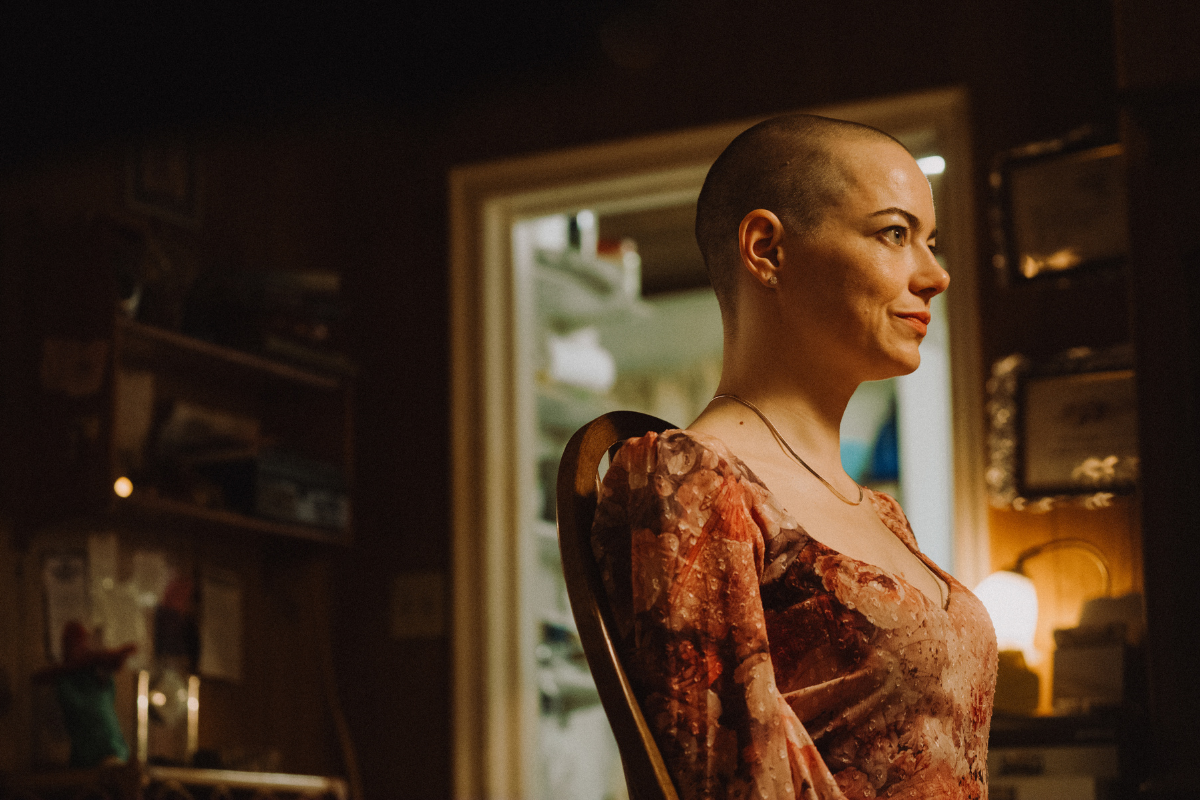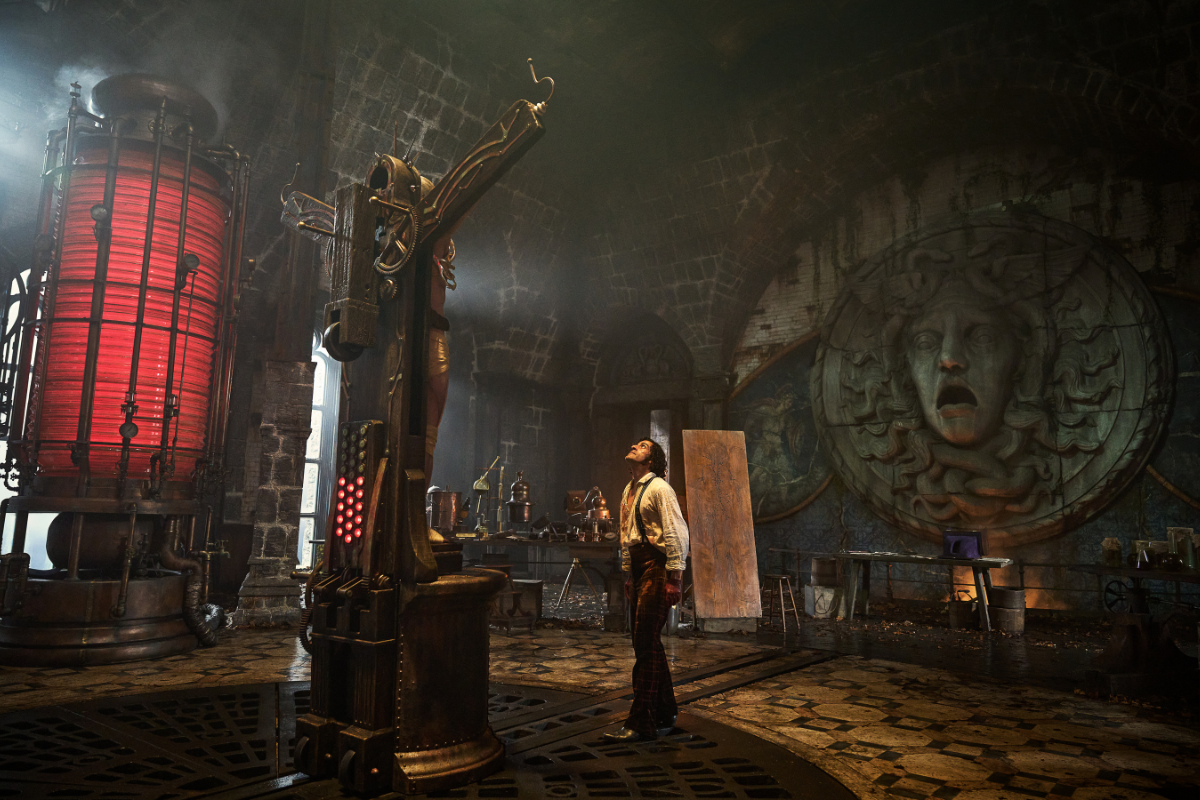BREAKING & ENTERING: Story Foundation – Write From Below the Ground Up
Barri Evins’ secret to creating strong stories: dig deep to lay a solid foundation before building up structure. Discover the building blocks of foundation.
Barri Evins’ secret to creating strong stories: dig deep to lay a solid foundation before building up structure. Discover the building blocks of foundation.
Like many others involved in the Film Industry, I live in Los Angeles. These days, I have a small cottage tucked in behind a bigger house. My theory being: Simple space + simple life = more time to write.
My simple existence was shattered recently when they decided to build more cottages. It's easy to imagine the nonstop ruckus of pounding, sledgehammering and excavating.
But the start of construction proved to be enlightening. The builders dug a deep hole so they could lay a foundation that would be strong enough to meet California Earthquake Standards. That meant that every time I needed to come or go, I had to walk across a narrow wood plank over this huge, gaping pit in the ground.
Only when they had dug deep down, did they begin to fill the hole – a very methodical process. Steel rebar beams were sunk in to meet specific structural integrity codes. That had to pass an inspection before the cement foundation was poured. It too had to pass the building inspector’s scrutiny before construction could continue.
My close up view of the complex creation of a solid foundation for these cottages got me thinking of how we can create strong and successful stories by first digging deep.
I’ve extoled the virtues of outlining time and again, in my ScriptMag column on outlining for understanding, to gain depth and meaning, and in my blog, to convince writers that outlining need not stifle creativity.
Creating a strong foundation before you start outlining makes it possible for you to build the structure of a screenplay, teleplay, or novel on top.
A solid, well constructed foundation is the best way to avoid that sinking feeling while writing that a wall is falling in and you must rush to prop it up, or the horror of finding that your entire story is collapsing just when you believed you were done.
This is where the hard work begins! Let's dig in.
Foundation First
It might seem natural to start with outlining – after all, virtually all the gurus advocate outlining – but what comes before the outline may be even more important. The time and effort put into laying a foundation is crucial because it will pay off throughout your writing process.
For my Big Ideas Screenwriting Intensive, I didn’t want to diss the Structure Gurus I admire, but I knew that I needed a tool to to help my students develop solid ideas quickly and effectively. Outlining focuses on plot. But story is more than pure plot. Before figuring out “What happens next?” you need to know why it happens.
I created the Big Ideas Structure Template: A basic outlining tool that enables writers to work out the major beats of their plot, while staying connected to their key story elements. At the top is a header. It provides the sturdy base to support the entire structure of your story.
My header contains the foundation of story: title, genre, logline, hero, character arc, and theme. The header is designed to help you figure out these interconnected story essentials before you start outlining.
You cannot move forward until these pieces are working together. You may go back and revise them as you work on the story beats – and I think revising is great – but your first focus should be on making the header work. It forces you to think about both internal and external conflict and how they intersect to create structure and illustrate theme.
When the foundation is clear to you, and each of the parts are working together effectively, you will be in a much stronger position to move forward successfully with your outline.
What I love about my template is a special feature that is built in. Each time you begin a new page, the header pops up. No matter how many pages your outline spans, there’s that darn header, front and center. It’s my way of nagging you to stay focused on the foundation.
Without a strong foundation, the story is at risk of collapsing.
Here are the elements I think are essential:
- Title: If you have a strong title at the start of your journey that’s a huge plus. Like every aspect of your foundation, it should serve a function. Great titles support the tone, have a pithy twist to them, and potentially can be a sly commentary on, or oblique reference to the story. You may have a working title to start, and that’s fine. Or your title may change over the course of writing the story. A clever title can be a big plus in marketing your material, so don’t stop thinking about yours as the project evolves. Try not to get overly attached to your original title so you can stay open to new possibilities as they come up in developing the story, as well as in the writing process.
- Logline: First things first. The story concept is key. I recommend that the first thing you work on is developing your idea. If you’re starting with a concept, then build from there to a logline. Your logline may well evolve over time – and I think that’s a good thing – but this is a great way to begin to articulate your premise. If you can’t articulate your idea in a single sentence, that might be a red flag that you’re not ready to move forward. You need to be able to say: “This is a story about…” You can find more advice for writing successful loglines here. My best logline advice? Take it for a test drive. Find out how to test your concept and what questions to ask to ensure that there’s an audience and that the logline clearly conveys your concept here. Plus, watch my favorite logline mythbuster here.
- Genre: As you’re developing your concept, think about genre in a specific way. Go beyond “comedy” or “drama” or “action,” and get definitive. This is what I call “tone.” Genre is general. Tone is specific. There must be a dozen types of comedy: buddy comedy, broad comedy, character-driven comedy, dramedy, family comedy, farce, raunchy comedy, rom-com, satire, smart comedy, spoof, plus genre mash ups, such as action-comedy. When you define the tone of your story, every choice you make after that can be used to support it.
- Prototypes: Some writers resist prototypes. “My work is one of a kind!” But I prefer to think successful prototype films are like finding a treasure map. Someone has handed you a proven route to success. They worked long and hard to get there and, at the end, they left you a pot of gold. What they did worked. Thus the emphasis on successful. These stories are a great learning tool at your disposal. Successful films are like role models. I encourage writers to think of three prototypes, one for story, one for tone, and one for theme, as a significant part of their foundation. A useful way to help define the feeling of your story is to think of a successful prototype film that matches the precise tone you are hoping to capture. Feeling lost on theme? Go back to your prototype and see how theme is expressed and supported throughout the story in scenes, in visuals, through conflicts, and with characters. Story prototypes can be especially useful for understanding audience expectations in a genre. We want the star-crossed lovers to get together, we want heroes to face great odds, we want bad guys to get their just deserts. In a world where we often hope for real life happy endings, and just as often might not get them, they are a very appealing element in the stories we love. I’m not talking sugar coating, riding off into the sunset, and happily ever after. I’m talking satisfying endings – ones that fulfill your audience’s expectations.
- Character: Defining your hero will inform your story. What are the essential characteristics of your hero? “Essential” is the key word here. What is the most important trait that defines them at the outset? If I gave you just one adjective, what would it be? That is the characteristic that defines them, that needs to change over the course of the story. Hint: Look to their flaw. Flaw is the intersection of what your hero really, truly wants internally, and their characteristic that stands in their way of their achieving that desire. These two characteristics should be in direct conflict with each other. Examine your protagonist at the start of the story, and think about these questions: What do they think? What do they believe? What do they want? What do they need? When you have that answer, define how have they changed by the end of the story.
- Arc: The header forces you to think about your hero at both the start and the end of the story because it illustrates their character arc. And character arc is the key to structure. The quickest way to find the spine of your story is to know who your character is at the outset of the story and how they are different at the end, after they have experienced the events of the story. This spine defines their arc and is a huge clue as to structure. It will guide you as you lay out the beats of the story. “What happens next” can be determined by the experiences your hero must undergo in order to change.
- Theme: Every element of your foundation should build to theme. Theme is the heart of the story. It’s the central belief the entire story is based upon. The story proves that the theme is true. Theme is what the hero learns along the way. It is what they discover about their inner selves through experiencing the external conflicts of the story. Theme is illustrated by how they change from who they are at the outset to who they are and what they believe in the end – their internal conflict. Watch here to learn more about why theme is essential.
- Flip It: If you’ve been working forward through these steps, now try working them backward and see if they still fit together. As your understanding of the fundamentals of your story takes shape, this is the ideal time to implement change.
While working on your header, you are refining your story, making discoveries, and gaining a better understanding of these essential elements. Great! Go back and revise. Any and all parts can change at this point, even your logline. Honing your foundation is where your understanding of the fundamentals of your story takes shape and grows deeper.
You cannot move forward until these pieces are supporting each other. While you may go back and revise them still further as you work on the story beats, your first focus should be on making the header work. When the header is clear to you, and the parts are working together, you have laid the foundation. Now you are in a much stronger position to move forward successfully to build up.
Foundation Answers Questions
The Header becomes the keyhole or litmus test through which all major story decisions must pass. Every beat of your story can stem from character, support arc, strengthen structure and reflect the theme.
Unsure what direction to take next in your outline? Go back to the header. This solid foundation is the great decider, from story beats to character-driven choices.
Does this choice support the foundation? If so, this beat may be a meaningful part of your story, advancing both plot and character at the same time. This makes for strong scenes.
Does it fit in with the foundation? If not, this beat may not be on target with your message. Your script could be losing focus. This is especially helpful as you are struggling to structure the aptly named “muddle of the middle.”
Does it build up from the foundation? If not, this beat may be extraneous to your story. Your goal should be for all the major story beats to both advance plot and reveal character and/or arc. This makes for strong, focused stories.
Relying on the well thought out decisions you made in creating your foundation as a guide to all other story decisions that follow makes an incredible impact. It provides guidance when you feel uncertain. It encourages choices that are unique to your hero and to your story. It strengthens the caliber of your storytelling.
Create A Foundation The Passes Inspection
New construction requires Architects, Building and Safety Permits, Structural Engineers, and a Licensed Building Inspector. Step after step, all long before the actual structure begins to go up. And at every juncture, there are inspections. After the architect does his job, the plans have to meet standards before any construction begins. Once approved, they dig down to lay the foundation. The steel rebar goes in and must be inspected. Then they pour concrete, and that too must pass inspection. All before a single brick can be laid.
At one point, the construction in my backyard came to a dead halt. The six-day a week project didn’t take a step forward for nine days .What happened?
The Building Inspector got the flu.
No inspection, no progress.
This seems like a good policy. Well worth appropriating for your work as a writer.
Once you feel you have a solid foundation, get an inspection before moving forward.
You should have a clear vision of your story at this point that will enable you to give a short pitch. Try it out on friends. After all, they’re moviegoers. Turn to other writers for feedback. Hopefully, you have built a network of writers whose work you admire, that you can trust for an objective opinion.
Take their feedback, consider what would strengthen your story, and then review your foundation once again.
At that point, you might consider getting some professional input. I offer a Free Logline Thumbs Up or Thumbs Down, as well as a full logline and pitch consultations. After all, wouldn’t you rather redesign at the outset rather than completing the arduous process of constructing an entire screenplay only to discover that you have to knock it down, rip it apart, and start building again?
Just as there are strict codes for all constructed objects, there are huge benefits to making certain that your work passes an inspection at every phase.
Stop. Do not pass go. Don’t proceed without a permit.
Rewriting? Go Back To The Foundation
It's not easy to get feedback on your completed story and walk away feeling that you have to take a wrecking ball to your script. Before your start tearing it down, or even significantly remodeling, go back to the foundation. It may well show you where the problem began.
Every rewrite impacts your original vision. Before tackling even a redecorating job, head back to your header. It’s crucial to keeping the pieces of your story working together to maintain the strong foundation for your script.
I’m heading into a significant rewrite with a writer on a project that I’m producing. In looking for direction, the first thing we did was go back to the header.
A major change in this project is rethinking the tone. When we started out, we envisioned an edgier feel than we wound up with. This led us back to discussing the prototype films from the original header. We went beyond the ones we had first chosen and looked for other films that reflect the tone, story, and theme we’re grappling with.
Before making changes, make sure that they support the foundation you have, or rework the foundation so that the changes are integrated into the original foundation.
Foundation In Action
Creating a foundation before you create an outline is a powerful and effective tool that I hope will help you craft strong stories long into the future.
Want an sample of a header in action? You can find an example using a timeless movie where all the pieces work together brilliantly.
Which film?
Here's a hint:
Get more tips from Barri Evins with her on-demand webinar
Loglines, Queries & Synopses:
How to Take Your Script from Being Ignored to Getting Noticed!
Barri Evins draws on decades of industry experience to give writers practical advice on elevating their craft and advancing their career. Her next SCREENWRITING ELEVATED online seminar with 7 monthly sessions plus mentorship will be announced in 2025. Breaking & Entering is peppered with real life anecdotes – good, bad, and hilarious – as stories are the greatest teacher. A working film producer and longtime industry executive, culminating in President of Production for Debra Hill, Barri developed, packaged, and sold projects to Warners, Universal, Disney, Nickelodeon, New Line, and HBO. Known for her keen eye for up and coming talent and spotting engaging ideas that became successful stories, Barri also worked extensively with A-List writers and directors. As a writer, she co-wrote a treatment sold in a preemptive six-figure deal to Warners, and a Fox Family project. As a teacher and consultant, Barri enables writers to achieve their vision for their stories and succeed in getting industry attention through innovative seminars, interactive consultations, and empowering mentorship. Follow her on Facebook or join her newsletter. Explore her Big Ideas website, to find out about consultations and seminars. And check out her blog, which includes the wit and wisdom of her pal, Dr. Paige Turner. See Barri in action on YouTube. Instagram: @bigbigideas X: @bigbigideas







